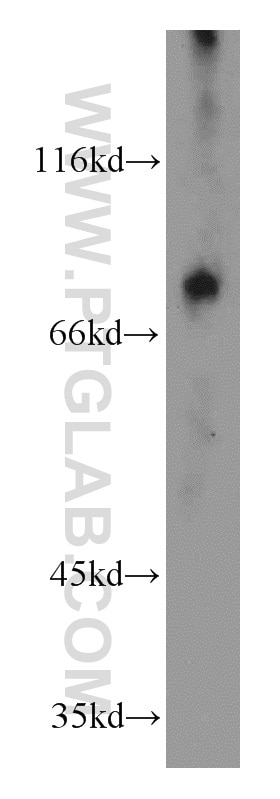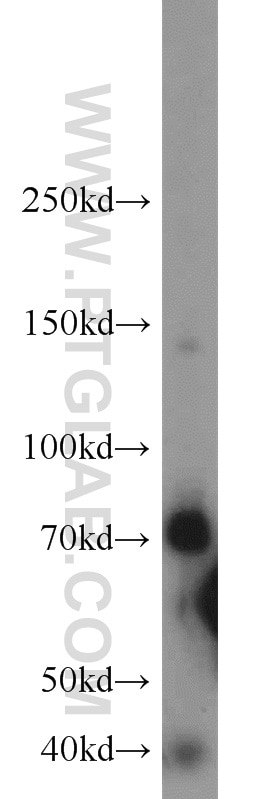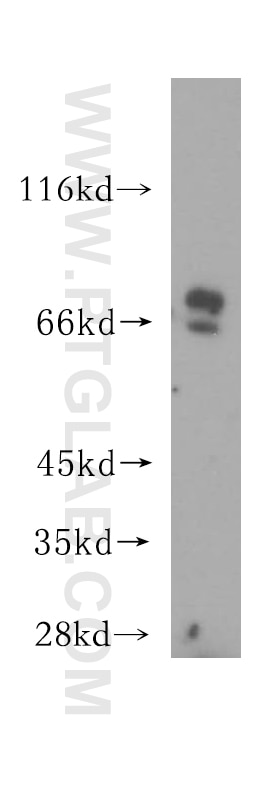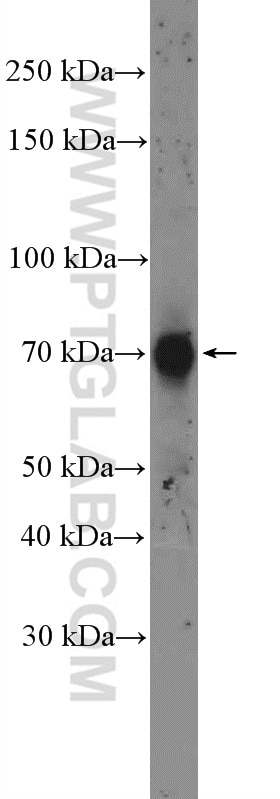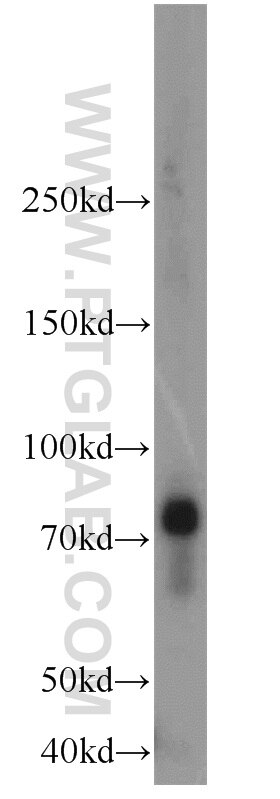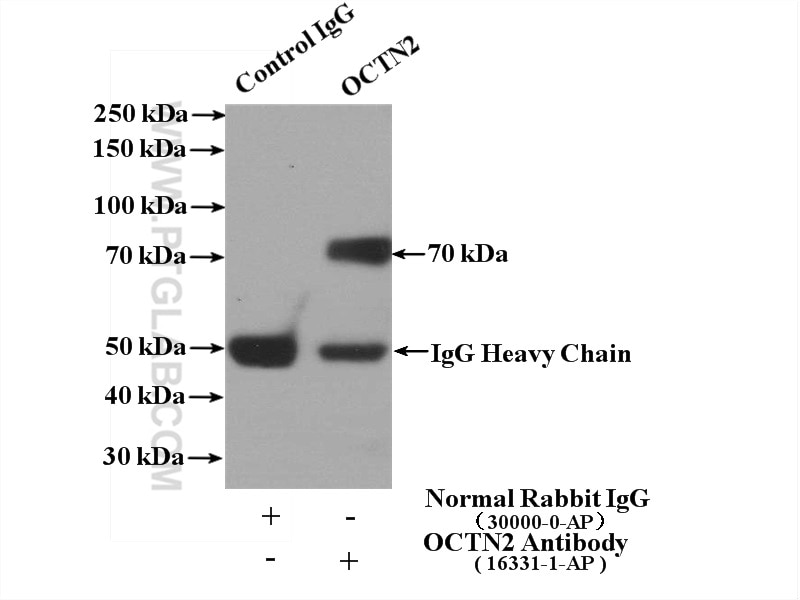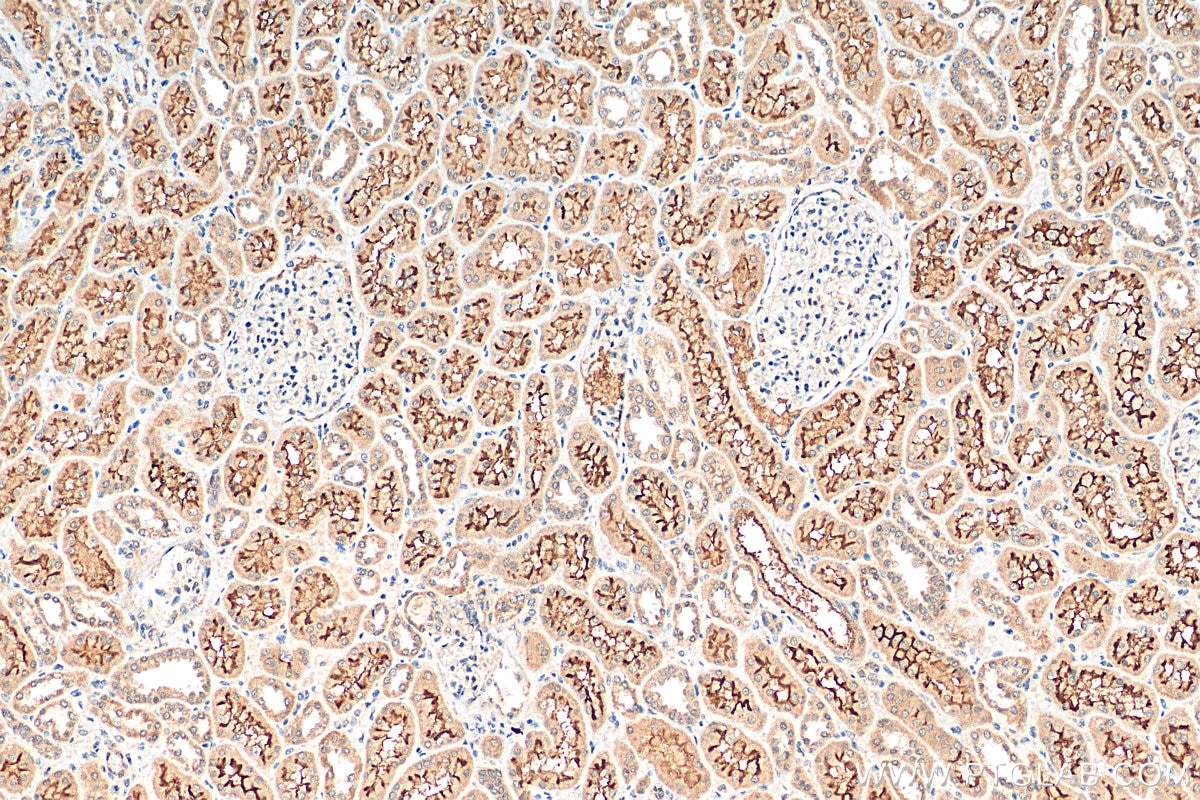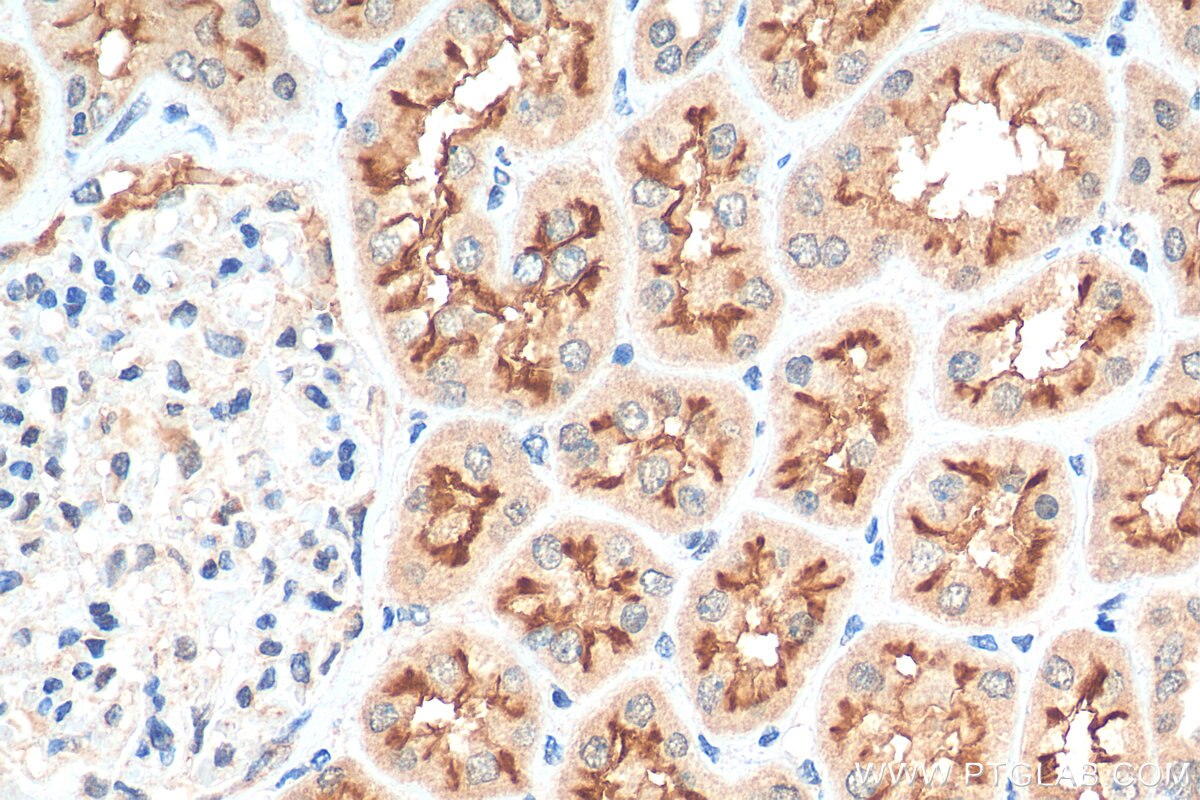- Featured Product
- KD/KO Validated
OCTN2 Polyklonaler Antikörper
OCTN2 Polyklonal Antikörper für WB, IHC, IP, ELISA
Wirt / Isotyp
Kaninchen / IgG
Getestete Reaktivität
human, Maus, Ratte
Anwendung
WB, IHC, IF, IP, ELISA
Konjugation
Unkonjugiert
Kat-Nr. : 16331-1-AP
Synonyme
Geprüfte Anwendungen
| Erfolgreiche Detektion in WB | Maus-Dünndarmgewebe, humanes Plazenta-Gewebe, Maus-Pankreasgewebe, Maus-Skelettmuskelgewebe, Maushodengewebe |
| Erfolgreiche IP | Maus-Skelettmuskelgewebe |
| Erfolgreiche Detektion in IHC | humanes Nierengewebe Hinweis: Antigendemaskierung mit TE-Puffer pH 9,0 empfohlen. (*) Wahlweise kann die Antigendemaskierung auch mit Citratpuffer pH 6,0 erfolgen. |
Empfohlene Verdünnung
| Anwendung | Verdünnung |
|---|---|
| Western Blot (WB) | WB : 1:500-1:1000 |
| Immunpräzipitation (IP) | IP : 0.5-4.0 ug for 1.0-3.0 mg of total protein lysate |
| Immunhistochemie (IHC) | IHC : 1:50-1:500 |
| It is recommended that this reagent should be titrated in each testing system to obtain optimal results. | |
| Sample-dependent, check data in validation data gallery | |
Veröffentlichte Anwendungen
| KD/KO | See 1 publications below |
| WB | See 11 publications below |
| IHC | See 1 publications below |
| IF | See 1 publications below |
Produktinformation
16331-1-AP bindet in WB, IHC, IF, IP, ELISA OCTN2 und zeigt Reaktivität mit human, Maus, Ratten
| Getestete Reaktivität | human, Maus, Ratte |
| In Publikationen genannte Reaktivität | human, Maus, Ratte |
| Wirt / Isotyp | Kaninchen / IgG |
| Klonalität | Polyklonal |
| Typ | Antikörper |
| Immunogen | OCTN2 fusion protein Ag9450 |
| Vollständiger Name | solute carrier family 22 (organic cation/carnitine transporter), member 5 |
| Berechnetes Molekulargewicht | 557 aa, 63 kDa |
| Beobachtetes Molekulargewicht | 70-80 kDa |
| GenBank-Zugangsnummer | BC012325 |
| Gene symbol | OCTN2 |
| Gene ID (NCBI) | 6584 |
| Konjugation | Unkonjugiert |
| Form | Liquid |
| Reinigungsmethode | Antigen-Affinitätsreinigung |
| Lagerungspuffer | PBS with 0.02% sodium azide and 50% glycerol |
| Lagerungsbedingungen | Bei -20°C lagern. Nach dem Versand ein Jahr lang stabil Aliquotieren ist bei -20oC Lagerung nicht notwendig. 20ul Größen enthalten 0,1% BSA. |
Hintergrundinformationen
OCTN2 (Organic Cation/Carnitine Transporter 2), encoded by SLC22A5, is a ubiquitously expressed organic anion/cation transporter. OCTN2 plays a key role in absorption, tissue distribution and renal reabsorption of L-carnitine which is an essential cofactor in fat metabolism. Defects in the OCTN2 are responsible for primary carnitine deficiency. OCTN2 also transports some important respiratory medicines (such as tiotropium), and due to its expression in the lung, may influence the disposition and absorption of these medicines in the lung.
Protokolle
| PRODUKTSPEZIFISCHE PROTOKOLLE | |
|---|---|
| WB protocol for OCTN2 antibody 16331-1-AP | Protokoll herunterladen |
| IHC protocol for OCTN2 antibody 16331-1-AP | Protokoll herunterladenl |
| IP protocol for OCTN2 antibody 16331-1-AP | Protokoll herunterladen |
| FC protocol for OCTN2 antibody 16331-1-AP | Download protocol |
| STANDARD-PROTOKOLLE | |
|---|---|
| Klicken Sie hier, um unsere Standardprotokolle anzuzeigen |
Publikationen
| Species | Application | Title |
|---|---|---|
Cell Metab Global Analysis of Plasma Lipids Identifies Liver-Derived Acylcarnitines as a Fuel Source for Brown Fat Thermogenesis. | ||
Food Funct Ferulic acid supplementation alleviates hyperuricemia in high-fructose/fat diet-fed rats via promoting uric acid excretion and mediating the gut microbiota | ||
Nutrients The Enhancement of Acylcarnitine Metabolism by 5-Heptadecylresorcinol in Brown Adipose Tissue Contributes to Improving Glucose and Lipid Levels in Aging Male Mice | ||
Front Pharmacol L-carnitine prevents lenvatinib-induced muscle toxicity without impairment of the anti-angiogenic efficacy | ||
J Neurochem Identification of drug transporters contributing to oxaliplatin-induced peripheral neuropathy.
| ||
Toxicol Lett Lenvatinib causes reduced expression of carnitine/organic cation transporter 2 and carnitine deficiency in the skeletal muscle of rats. |
